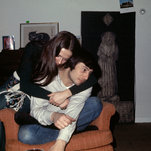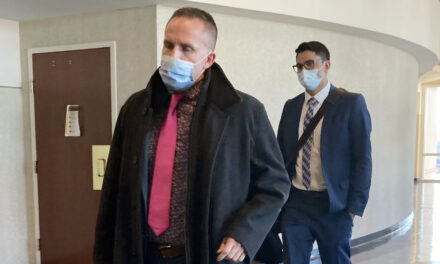
What You Need to Know About the Robert Durst Case

The subject of HBO’s “The Jinx” was convicted of killing a close confidante in 2000, to stop her from revealing what she knew about the disappearance of his wife.

Image

1982
Missing: Kathleen McCormack Durst
“VANISHES! Search for beautiful wife of developer” screamed the headline in The New York Post. That developer was Robert A. Durst, heir to a real estate empire whose towers helped shape the Manhattan skyline. His wife, a 29-year-old medical student, had disappeared the night of Jan. 31, Mr. Durst told the paper (in an interview arranged by his friend and publicist, Susan Berman), and he desperately wanted to find her.
Married in 1973, the couple partied at Studio 54, sailed the Mediterranean and traveled to Thailand. They split time between a lakeside cottage 50 miles north of Manhattan and a penthouse apartment on Riverside Drive. But their relationship grew fraught, friends would later say, after Mr. Durst pressed his wife to have an abortion.
Five days after her disappearance, Mr. Durst walked into a police precinct station house to report her missing. Family and friends immediately suspected him. “I think he killed her,” Ms. Durst’s sister, Mary McCormack Hughes, recalled telling her husband after Mr. Durst called to say that she was missing. Her body has never been found, and Mr. Durst insists that he doesn’t know what happened to her.
Image
1994
A Rift in the Family
The Durst family owned a vast collection of office towers and other properties in Manhattan, and as the oldest son, Robert was the heir apparent. But by the 1990s, his behavior — erratic hours, siphoning off company money, urinating in his brother’s trash bin — had lost him the favor of his father, Seymour, who chose Mr. Durst’s younger brother to take over the business in 1994.
The two brothers, only 18 months apart, had never gotten along, especially after their mother, Bernice, either fell or jumped from the roof of the family home in 1950, when Robert was 7. Devastated by his father’s choice, Mr. Durst cut himself off from the family and began flitting among homes in New York, Texas and California. He did not attend his father’s funeral in 1995.
Image
1999
Reopening the Case
Mr. Durst told police detectives that the last time he saw his wife was when he put her on a train to Manhattan after a dinner at their cottage in South Salem, N.Y. The initial search for her in the 1980s had focused on their Manhattan penthouse.
But in 1999, a State Police investigator got a tip — a bad one, it turns out, but it made him start looking into the 17-year-old cold case. He pored over old police records and reinterviewed witnesses, then took the case to the Westchester County prosecutor.
The new investigation burst into headlines in November 2000. Mr. Durst quickly married a second time, gave his new bride control over his financial affairs and rented a $300-a-month room in Galveston, Texas, while posing as a mute woman. He didn’t want to be Robert Durst anymore, he would later tell a prosecutor.
He also heard from Susan Berman, his former publicist. She was in desperate financial straits and asked for help. Mr. Durst sent her two checks for $25,000.
Image
2000
Death of an Old Friend
On Christmas Eve, not far from where the followers of Charles Manson had murdered Sharon Tate in 1969, residents of Benedict Canyon Drive saw two dogs running free. They belonged to Ms. Berman.
The police were called, and they found her back door open. Inside the house, Ms. Berman was lying dead, shot in the back of the head, her terriers’ paw prints tracked through the pool of blood. There were no signs of forced entry, and her purse sat untouched.
There were other suspects in Ms. Berman’s death: her manager, the landlady. But top of the list was whoever had written a note, postmarked Dec. 23, to the Beverly Hills Police (misspelled “Beverley”). On a sheet of spiral notebook paper, Ms. Berman’s address was printed in big block letters, along with a single word: “cadaver.”
Image
2003
On Trial in Texas
On Sept. 28, 2001, a man fishing with his children found a torso floating in the waters of Galveston Bay. During a search, a police officer discovered a man’s arms and legs amid plastic garbage bags nearby. The head was never found.
The bags contained a cover for a bow saw, a receipt from a local hardware store, a drop cloth and a newspaper with the delivery address of an apartment house in Galveston. The victim, Morris Black, lived there. So, investigators would discover, did Mr. Durst, disguised as a woman.
On trial two years later, Mr. Durst took the stand and claimed that the two men had been friendly. But one evening, he returned to his apartment to find Mr. Black, 71, wielding his gun. They struggled and fell. The gun went off. Fearing no one would believe him because of his wife’s long-ago disappearance, Mr. Durst said, he sat in a pool of blood on the kitchen floor, cutting up the body.
The jury acquitted him of murder.
Image
2015
A Documentary, and a New Clue?
The police in Los Angeles suspected Mr. Durst in Ms. Berman’s murder. In 2002, while he awaited trial in Galveston, they got a sample of his handwriting to compare to the “cadaver” note. But they didn’t have enough evidence to charge him. As with his wife’s disappearance, the case went cold.
Mr. Durst didn’t keep quiet, though. He talked to the producers of a 2010 feature film, “All Good Things,” which presented a lightly fictionalized version of his life, then agreed to sit with them for more than 20 hours of interviews. He also gave them access to more than 60 cartons of his private papers, family mementos, credit card receipts, phone bills and legal papers.
The filmmakers turned it all into a six-part HBO documentary that aired in 2015: “The Jinx: The Life and Deaths of Robert Durst.”
Mr. Durst admitted to violence toward his first wife. He admitted to lying to investigators. And most striking, perhaps, was a 1999 letter the filmmakers found that Mr. Durst had written to Ms. Berman in Beverly Hills.
Like on the cadaver note, the address was printed in big block letters.
Like on the cadaver note, “Beverley” was misspelled.
Image
2015
Under Arrest, Again
In the last moments of the final episode of the “The Jinx,” which aired on March 15, Mr. Durst is filmed walking off to the bathroom with a microphone still attached to his shirt.
“What the hell did I do?” he is heard to say. “Killed them all, of course.”
His lawyers argue that it wasn’t a confession; the producers took two sentences he uttered at different points in the bathroom and spliced them together. But by the time those words aired, Mr. Durst was already in custody.
Twenty-four hours before the final broadcast, F.B.I. agents detained Mr. Durst on a murder warrant in New Orleans, where he had booked a hotel room under an alias. The authorities said they believed that he was about to flee the country.
John Lewin, a Los Angeles deputy district attorney, flew to New Orleans and interrogated Mr. Durst the next morning. In a three-hour review of his life story, Mr. Durst complained that his brother wanted to “take my birthright.” He conceded that he was “very, very, very, very controlling” of his first wife. He described Ms. Berman as his “best friend.” And he had a striking interpretation of the cadaver note.
“Whoever wrote that note,” he said, “had to be involved in Susan’s death.”
Image
2019
A Surprise Admission
Nineteen years to the day after Ms. Berman’s body was found, Mr. Durst’s lawyers made a stunning concession in a Christmas Eve court filing: After denying for nearly two decades that he had written the cadaver note, Mr. Durst now admitted to it.
It was the first time that either Mr. Durst or his lawyers were willing to acknowledge that he was in Ms. Berman’s home, or even in Los Angeles, around the time of the murder. But despite the admission, Dick DeGuerin, Mr. Durst’s lead lawyer, said the defense’s bottom line remained unchanged.
“Bob didn’t kill Susan Berman,” he said, “and he doesn’t know who did.”
Image
2021
A Trial Split by a Pandemic
Opening statements began in the trial of Mr. Durst for the murder of Ms. Berman in March 2020, just before the coronavirus pandemic brought life across America to a halt.
When testimony was set to resume in May, defense lawyers called the 14-month delay the longest adjournment featuring the same jury in U.S. history, and argued that jurors might have forgotten details or slipped in their obligations not to read or watch reports about the case during the long break.
But the judge, after interviewing the jury members, ordered the trial to proceed. Although Mr. Durst was charged with only one murder, the prosecution argued that the millionaire had killed Ms. Berman because he feared that she would reveal what she knew about the disappearance of his wife.
After weeks of testimony, in which prosecutors called 80 witnesses and introduced nearly 300 exhibits, the jury deliberated for about seven and a half hours before finding Mr. Durst guilty. In his sentencing for first-degree murder, set for Oct. 14, he faces a life sentence with no option for parole.
Mr. Durst was not in the courtroom for the jury’s verdict; he was in isolation, officials said, after being exposed to someone who had tested positive for the coronavirus.
After the verdict, his wife’s family issued a statement calling on the authorities to pursue a case in her death as well. “Kathie,” the family wrote, “is still waiting for justice.”
Source: https://www.nytimes.com/article/robert-durst-trial.html

















